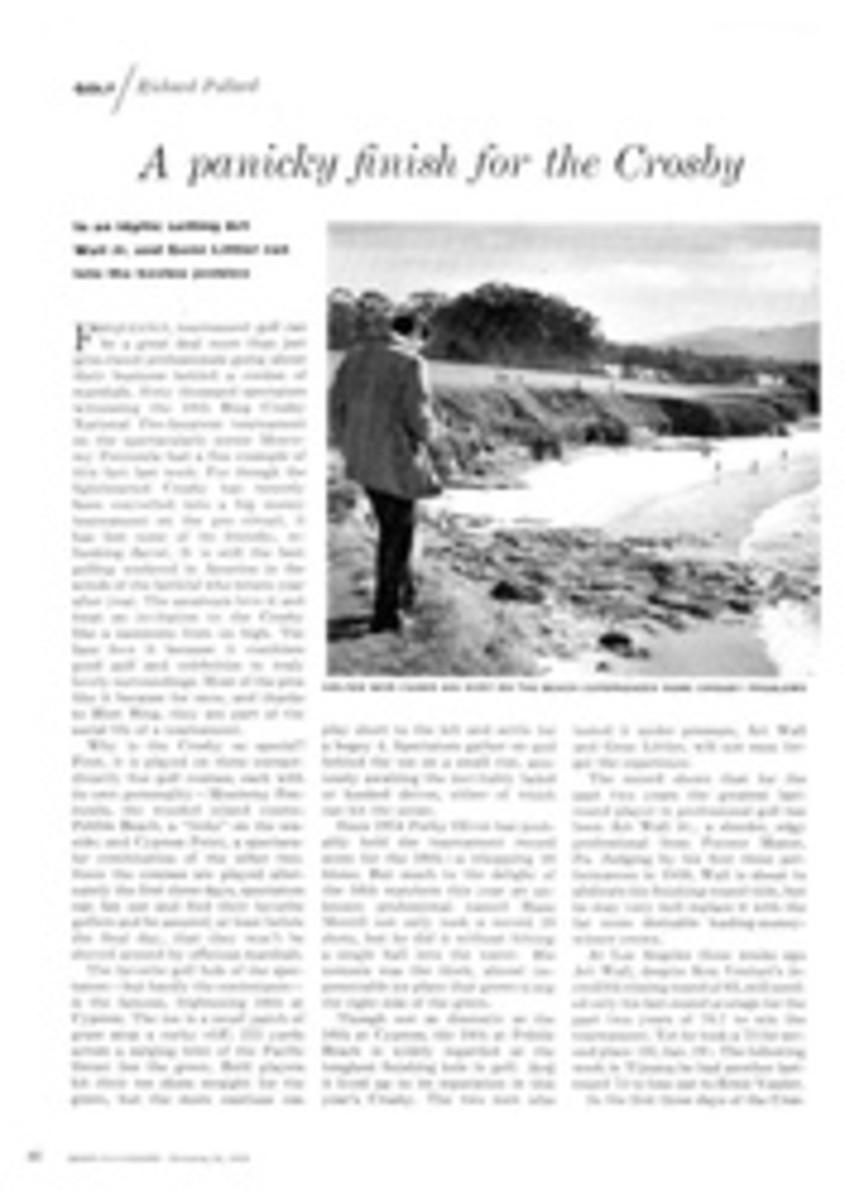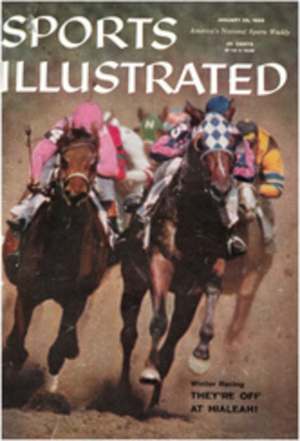
SMOOTH RIDE FOR ROUGH SEAS
For years the joy of fast riding in high-powered motorboats has been tempered by one sad, inescapable truth—when a motorboat goes upwind in rough water it pounds. Sometimes it pounds hard enough to crack the frames, but always it pounds hard enough to make the driver wish somebody would design a better boat—and somebody is always trying. Until now, no one had succeeded. But in the last fortnight, at boat shows from Los Angeles to New York, it seemed a few designers may have solved the problem of making a sensible craft that will give a soft ride to windward. As the drawings on these pages show, they have tried everything from double and triple hulls to radical V-shaped after sections. Unusual and advanced, the ideas seem nonetheless to be sound and, if they hold up under the ultimate strain of heavy seas, the motorboat industry will have taken a giant step forward from just plain speed and thrills to speed, safety and comfort.
MERCURY CATAMARAN
Perhaps the most exciting and significant of the new designs is the Mercury catamaran, conceived by Carl Kiekhaefer, head of the company that makes Mercury outboard motors. "For years we've been testing boats and offering our ideas to the builders," said Kiekhaefer, whose company maintains a permanent testing ground in Sarasota, Fla., where any boatbuilder can have his new models wrung out by Mercury's test drivers. The more he saw conventional hulls pounding along past his testing area, the more certain Kiekhaefer became that catamarans might be the answer. And when a group of catamaran runabouts (see page 35) virtually swept the rugged Mississippi marathon, Kiekhaefer was convinced. He went to a catamaran expert named Warren Gale, who has built some 3,000 cats in the past nine years, and outlined his ideas for a family-size outboard cat with comfortable cruising accommodations and a sporty, open steering cockpit up forward. Gale and his engineers went to work and developed the finished product. The cat is 26 feet 8 inches long and has a generous 9-foot beam. Her main feature, of course, is the twin-hull design, which presents sharp, narrow forward sections that can slice through the swells rather than banging into them like the broad underside of a conventional hull planing at high speed. Rushed to completion for its debut at the New York show, the cat has not yet been given any serious testing under rough water conditions, but both Gale and Kiekhaefer are confident she will give a smooth ride even at her designed top speed of 30 mph.
EVINRUDE HOUSEBOAT
In the past four years no one has caused more commotion at the New York boat show than Brooks Stevens, design consultant to Evinrude. In 1956 he came out with a streamlined runabout called the Lark that kicked off the trend to auto styling in boats (SI, June 17, 1957). In 1957 he produced a completely round fishing boat. Last year he designed a seagoing station wagon; and now, for the 1959 show, he has dreamed up a high-styled catamaran houseboat called the Housefloat, which can become a trimaran or a quadrimaran simply by attaching extra units. The basic catamaran unit is 28 feet long, 9 feet wide, with enclosed cabin (see diagram) and a sun deck. As usual with Stevens creations, the design of the Housefloat contains some hard kernels of practicality. By substituting a pair of pontoons for the usual rectangular houseboat hull, Stevens has made a tremendous saving in weight. Furthermore, he has done away with the bluff, wave-slapping, wind-resistant bow that makes most other houseboats sluggish in any weather and almost impossible in choppy waters. Like Mercury's catamaran, the Housefloat is conceived as a show-stopper rather than a production boat for the retail market; but there may well be enough interest in both designs to tempt forward-looking boatbuilders into production.
ENTERPRISE MARINE'S DOODLE III
Probably the toughest formal test for any big powerboat is the 184-mile Miami-Nassau race, which starts across the narrow, nasty stretch of Gulf Stream between Florida and the Western Bahamas. Last year Doodle III won the race over 15 competitors. Since then, she has made a 52-mile run from Miami to Bimini in one hour 30 minutes and has gone from Miami to Havana at an average speed of 35 mph. It is unlikely that any conventional design could take that kind of pounding. And Doodle III, despite her conventional appearance, is indeed an unusual design. Her hull is mahogany planking laid over a tough shell of marine plywood. The bottom is shaped so that every curve is a section of a cone, a concept which allows the outer planking to be laid on with no bend or stress since the planks run down the straight side of the cone. Moreover, the outward curve of the conic sections helps give Doodle III a relatively soft ride against a head sea; and the gradual flattening of the curves from the entrance aft to the transom (see diagram) lifts her onto a smooth plane as she gains speed.
Rigged for fishing, with tuna tower, outriggers, fighting chair, flying bridge controls and fish door in the transom, Doodle III costs $40,000, or $5,000 more than the base price of $35,000 for the bare boat.
GEORGE O'DAY'S HUNTER
Ray Hunt is a Marblehead man who will try anything that may make a boat move more effectively through the water. Primarily, he is a sailboat designer (SI, June 23)—the Concordia yawls, Harrier, Easterner, the 110, 210, etc. Now he has branched out into powerboats, drawing up a 22-foot 8-inch utility inboard called Hunter for George O'Day Associates. The most obvious innovation in Hunter is her V-bottomed after sections, which reduce pounding to a minimum when the bow is up out of the water in a speed run. To help get her up onto a plane, she has three spray strips running fore and aft that give the hull an extra lift and at the same time help throw spray downward and away from the cockpit. And, finally, she has a centerboard, almost unheard of in powerboats (and not shown here, since Hunt regards its shape as one of his most important secrets). The centerboard, operated by a handle in the cockpit, performs the dual service of holding her on course at low speeds in a headwind or a crosswind and of steadying her on fast runs downwind with a following or a quartering sea.
ROY LEGER'S POWER CAT
When the Mississippi River Marathon started at New Orleans last year, there were 40 entries. Seven of these were Power Cats built by Roy Leger of Paramount, Calif. When the race ended at St. Louis, after 1,068 miles of rugged running on the river, there were 12 finishers. Six of these were Power Cats, and they came in second (only 10 minutes behind the winner), third, fourth, sixth, seventh, and 12th. The marathon was the climax of a five-year campaign for Leger, a devoted fisherman whose wife wouldn't go fishing because the boats rolled too much in the Catalina Channel. Rather than spend his leisure time ashore, Leger tried to design an easy-riding boat that rolled very little. He finally did it with the Power Cat, the 16-foot model of which is shown here, and the design was so successful that since he went into production three years ago he has sold over 500 Power Cats in models from 12 to 20 feet. Better than that, he has got Mrs. Leger out on the water. "Now she even races," he said proudly last week. "Races, mind you, in 16-foot Power Cats all the way out to Catalina."
DIAGRAM
CATAMARAN LAYOUT shows the fore-and-aft passageway in each hull, bunk space in wing.
ENGINE
WELL
HEAD
STORAGE
LOCKER
DOUBLE BED
LOCKER
PASSAGEWAY
LOCKER
GALLERY
COCKPIT
TWO ILLUSTRATIONS
AL BEECHEL
DIAGRAM
HOUSEBOAT ACCOMMODATIONS can be increased by adding pontoons, hull sections to basic unit.
STORAGE
HEAD
EXPANDED GALLEY
STERN DECK
HEAD
COCKPIT
SINGLE GALLEY
SOFA-BED
STERN DECK
ENGINE WELL
DIAGRAM
DOODLE'S TRANSOM shows bottom flattens toward stern but retains basic curve.
THREE ILLUSTRATIONS
JACK KUNZ
DIAGRAM
HUNTER'S TRANSOM has the same deep V along bottom as bow and midship sections.

